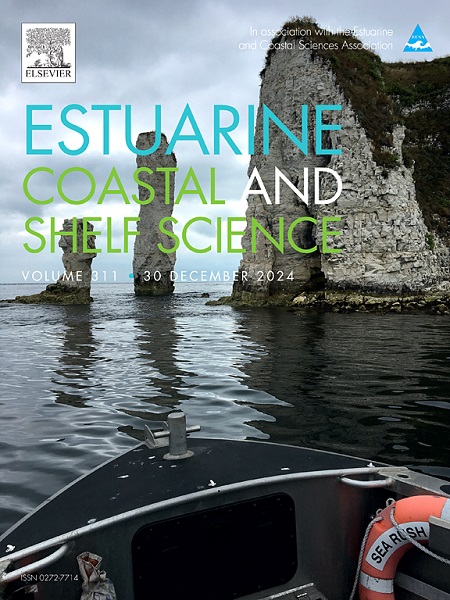Small-scale spatial pattern of the trophic structure of polychaetes from coral reefs: Implications of future sea level rise
IF 2.6
3区 地球科学
Q1 MARINE & FRESHWATER BIOLOGY
引用次数: 0
Abstract
The functional ecology of macrobenthic communities, particularly their trophic structure, is crucial for understanding ecosystem response to disturbances. The present study provides the first characterization of the small-scale spatial distribution patterns of polychaete feeding guilds in the midlittoral and shallow infralittoral of a tropical coral reef. The aim of this study was to analyze the small-scale vertical distribution of polychaete feeding guilds at the interface between the midlittoral and shallow infralittoral of a reef environment, using artificial substrate units (ASUs). Our results indicated that the most dominant polychaete group was SR-He-mic (herbivore feeding on surface benthic microbiota), followed by SR-De (feeding on surface deposits). The distribution of guilds was influenced by tidal height, with trophic group richness increasing from the midlittoral to the infralittoral. However, the distribution of organisms in the trophic groups was more equitable in the midlittoral zone, without the strong dominance of a single group. In contrast, tidal heights −0.3 m and −0.4 m were dominated by SR-De (feeding on surface deposits), showing slightly lower diversities although with high variation in values. Thus, trophic structure is expected to change significantly in the event of “drowning” (total or partial) of the reef ecosystem, with rising sea levels increasing the dependence of the ecosystem on deposited organic matter. This study highlights that the vertical zonation of the trophic structure of polychaetes plays a critical role in determining the vulnerability of the coral reef ecosystem to climate change, emphasizing the necessity and importance of mitigation actions to prevent significant changes in this ecosystem.

求助全文
约1分钟内获得全文
求助全文
来源期刊
CiteScore
5.60
自引率
7.10%
发文量
374
审稿时长
9 months
期刊介绍:
Estuarine, Coastal and Shelf Science is an international multidisciplinary journal devoted to the analysis of saline water phenomena ranging from the outer edge of the continental shelf to the upper limits of the tidal zone. The journal provides a unique forum, unifying the multidisciplinary approaches to the study of the oceanography of estuaries, coastal zones, and continental shelf seas. It features original research papers, review papers and short communications treating such disciplines as zoology, botany, geology, sedimentology, physical oceanography.

 求助内容:
求助内容: 应助结果提醒方式:
应助结果提醒方式:


